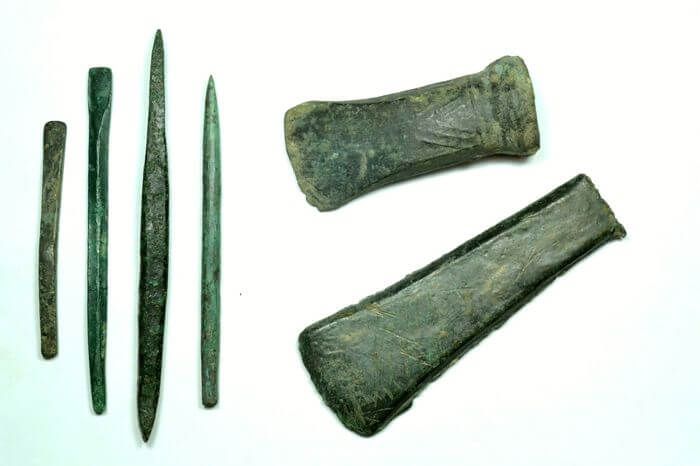History Of Bronze
History Of Bronze
They had bows and arrows and an occasional copper-headed axe. (Although a good, sharp stone axe held a better edge and was a far more effective tool than a copper one.)
Cooking was done over huge fire pits. These were lined with stones to retain heat. And many of these stones happened to be “tin stone” or tin ore.
One day, probably by accident, a lump of copper ore was dropped among these ordinary cooking stones by the fire tender.
The metal which flowed forth was a mixture of copper and tin…the two essential elements of bronze.
This, then, was the humble beginning of the great Bronze Age. And the race was on.
With bronze came an entirely new attitude. Axes now held their edge. Architecture was revolutionized. In fact, the Bronze Age saw the development of the stone “arch,” from which architecture takes its name.
The wheel and potter’s wheel were invented. And Bronze Age man discovered riding was superior to walking and first used horses and cattle as draft animals.
Soon, in the more civilized countries of ancient times, Egypt, Syria, Persia, and China, men were using bronze to create implements and memorials…many which endure today.
As far as art goes, archaeologists have discovered that the greatest artists of even the most antiquated civilizations preferred to immortalize their work in the Immortal Metal…Bronze.
Centuries later, the casting of bronze statues reached an artistic peak in France, Italy, and England. Notable figures of English kings probably prompted Shakespeare’s reference to the everlasting qualities of bronze. Then, in 1858, the great clock face of “Big Ben” at Westminster, England was cast.
The development and rapid growth of the memorial park concept and memorial park sections in monument cemeteries, brought about the need for a new type of bronze memorial. Especially developed, today’s bronze memorial is a custom cast in bronze of a particular alloy of copper, tin, lead, and zinc formulated to last throughout the ages. Its modest cost is a tribute to the developments in metallurgy, modern methods of manufacture, and the widespread acceptance of the new memorials by those who wish to commemorate their loved one in a personal, dignified and permanent




